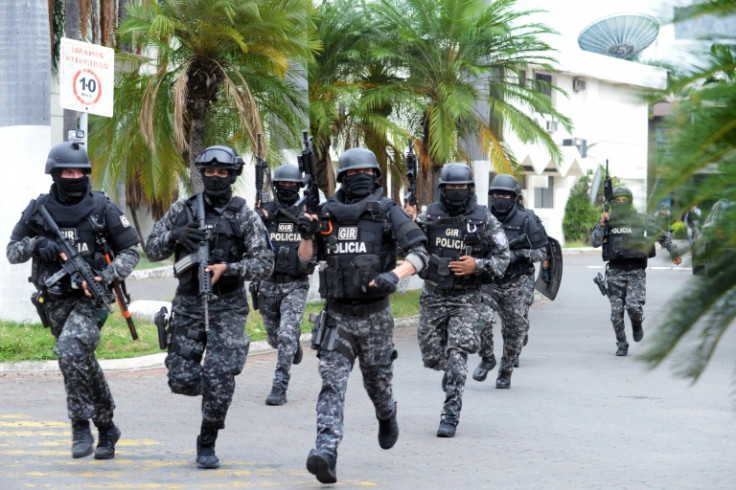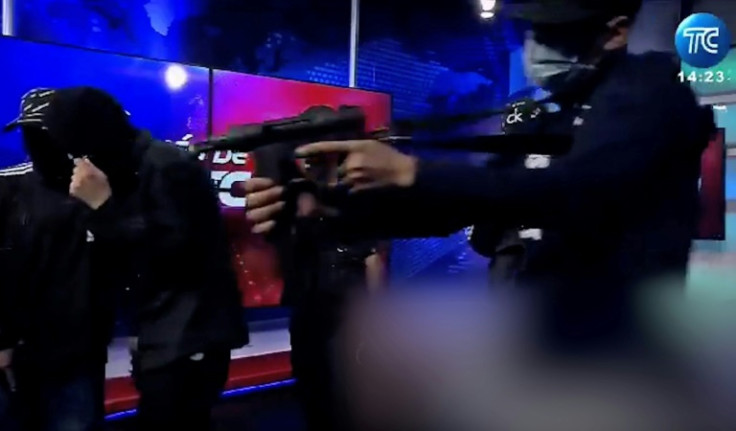
A crowd of students runs panicked through the campus of a university in Ecuador while others block a classroom door in fear of an armed intrusion.
Video of these scenes went viral amid a surge in gang-fueled violence in the South American country.
But no one was chasing the students or threatening to enter their classroom.
"It was an attack of generalized panic," Hector Hugo, a professor at the law school at the University of Guayaquil, told AFP.
"There was some sort of sound outside, people ran, and the message was distorted as it passed from mouth to mouth. There was even talk of a kidnapping on social networks, but there was no such thing."
In a statement, the university condemned "false information" spread online.
Ecuador has been gripped by anxiety since the government of President Daniel Noboa and powerful narco gangs declared war on each other last week, sparking violence that left around 20 dead and about 200 prison officials taken hostage before control was restored.
In one of the most dramatic scenes, masked gunmen stormed a live television broadcast, firing off shots and forcing the crew to the ground, begging for their lives. Police arrived swiftly and arrested the attackers.
The chaos -- sparked by the prison escape of a powerful drug lord -- has provided fertile ground for disinformation.
Real images, such as those from the TV studio assault, are mixed with the fake or distorted: an alleged mass kidnapping in the Quito metro or a spectacular police chase with gunfire outside the Israeli embassy -- both videos of past security drills.
"In environments of high conflict and uncertainty, it is natural that information becomes a battlefront," said Albertina Navas, director of the Pontifical Catholic University of Ecuador.
AFP's digital verification team also detected the spread of messages about alleged shootings, prison murders, and other violent attacks that either did not happen, or were old incidents.
Saudia Levoyer, a professor at the Simon Bolivar Andean University, said this type of disinformation "is a communication strategy -- there is someone behind this dissemination of false or manipulated content."
Sowing a climate of chaos "is one of the favorite strategies of these gangs," says the researcher.
In response to the prison escape of Jose Adolfo Macias, also known as "Fito" -- leader of the country's main crime gang, called Los Choneros -- the government imposed a state of emergency on January 8.
There is also a nighttime curfew from 11:00 pm to 5:00 am.
Patricia Hidalgo, director of the School of Communication at the International University of Ecuador, said there was also a political motive behind the disinformation.
Noboa, the 36-year-old new president, is serving out the final 18 months of the term of his predecessor Guillermo Lasso, who called an early election to avoid impeachment.
This means Noboa could be running again for office in 2025 elections, and his opponents may be trying to "destabilize him," said Hidalgo.
To counter the disinformation, the government and army have taken pains to publish the details of raids, arrests, and hostage releases.
They have also published images of their successful operations to regain control of prisons, with inmates stripped down and lying on the floor.
The government is trying to "show what they are doing in the most violent and dangerous areas -- that provides a counterweight" to the disinformation, said Levoyer.









